Our digestive system is often inundated with poor eating habits and these habits add stress to the body. When we cultivate a regular yoga practice, we gently squeeze out the waste and remove stale or stagnant fluids that are found within the digestive system and body.
The digestive system can become sluggish and create numerous digestive problems and diseases. Simple yoga postures, with breath awareness, help to stimulate the heart so that the body can be filled with the oxygenated blood needed to remove toxins from the body.
Yoga postures create space within the entire body and enable organs to work at optimal levels. They help to massage the internal organs and stimulate the digestive activity so that the entire system works more efficiently. The digestive system not only absorbs nutrients and feeds the body, but it’s also connected to our elimination system. We need to encourage it to work at healthy levels, so that wastes don’t easily collect and turn toxic to the body, and in turn, produce disease and/or chronic problems that affect our digestive system and other parts of the body.
Agnisar Kriya
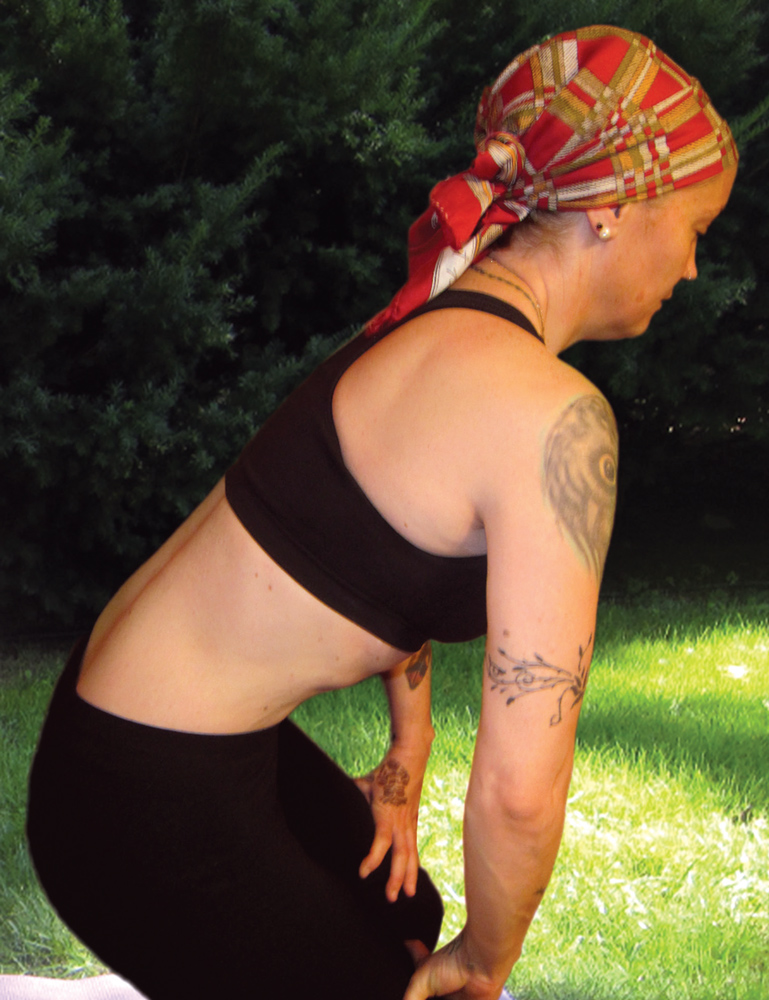
I recommend at the start of the day a cleansing practice for the digestive system called, Agnisar Kriya. it serves as an intestinal cleansing. the sanskrit words Agni translates as fire, sar as essence, and Kriya as action. Fire is the element for digestion and in yoga we often refer to it as our digestive fire.
This cleansing practice is best when done on an empty stomach, preferably in the morning, after evacuating the bowels. it is recommended that you do it after drinking a glass of warm water with lemon to help flush out the toxins.
- Stand shoulder distance apart.
- With bent knees, spine straight, bend slightly forward from waist.
- Palms rest on the knees, or just above, so the back isn’t sacrificed.
Breathe in deeply, exhale all air, tuck chin slightly, contract belly to spine, holding breath in this position, then push it all the way out. this provides internal organs with a deep internal massage; do these contractions while holding the breath.
Do as many as you are able to, working towards building the number of repetitions. inhale and slowly return to standing.
Caution: People with high blood pressure, internal ulcers, as well as hyperthyroidism, chronic diarrhea, should avoid this exercise, or wait until consulting with your physician.
As stated earlier, a yoga practice can help the digestive system given that stress is often linked to many digestive problems. Cultivating an asana practice improves the quality of life and improves one’s digestive system. this beginner level yoga practice enables those new to yoga an introduction to greater digestive health.
Balasana (Child’s Pose)
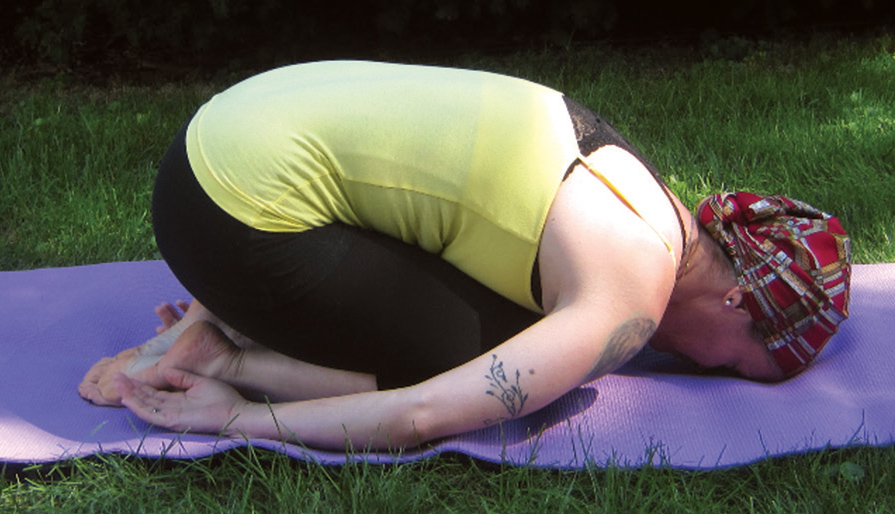
Begin with Balasana. it helps center the body and mind, bringing focus to the breath. Balasana soothes the nervous system, opens and stretches the hips, thighs, and ankles. stay in Balasana while focusing on the quality of the breath for 10-15 breaths.
- Come to the floor onto knees and palms.
- Sit onto the heels.
- Bring thighs side-by-side.
- Guide belly onto thighs.
- Forehead to the mat.
- Bring arms back beside thighs, palms facing upwards.
- Stay here with focus on the quality of the breath for 10-15 breaths.
Inhale to come up onto the knees and palms into a tabletop position to prepare for Cat/Cow sequence.
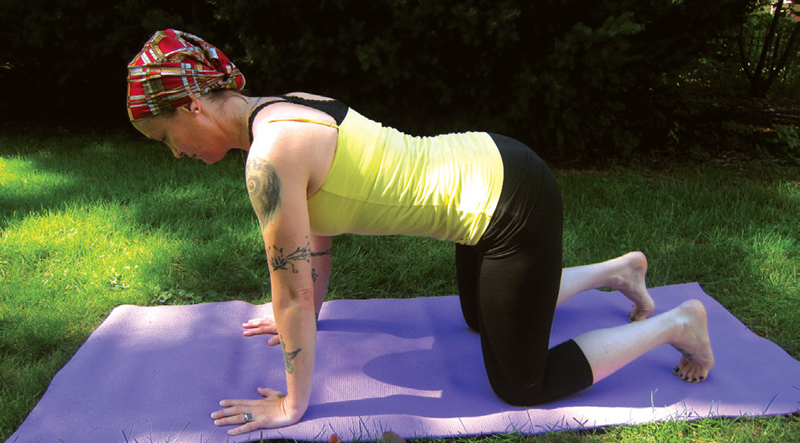
Chakravakasana (Cat-Cow Sequence)
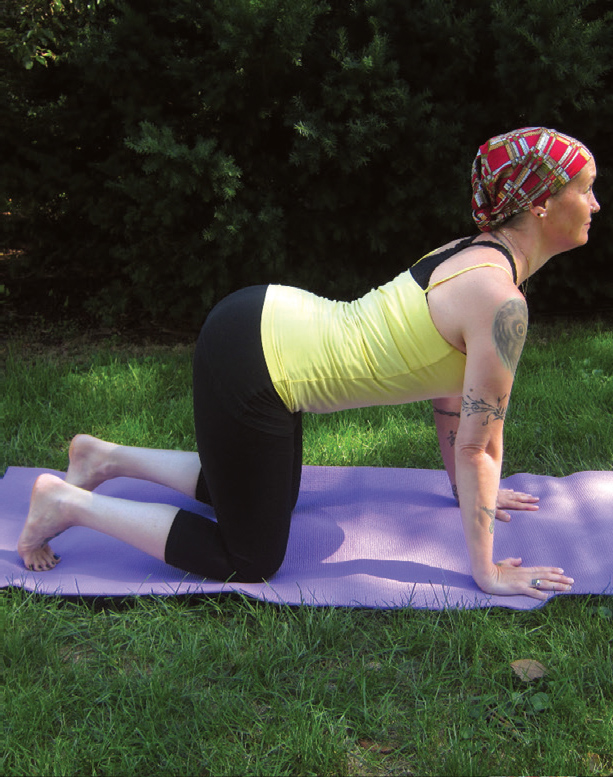
Chakravakasana slowly warms up the spine and is soothing for aligning and preparing the spine for a yoga practice. it also helps motivate the blood flow by stimulating the digestive system.
- Place hands shoulder distance apart, align knees directly under hips, toes tucked under.
- Inhale, head and tailbone up to Cow, as if in a back bend on the knees.
- Exhale to round the spine, tuck pelvis, belly button to spine, gaze at belly, Cat.
- Link this movement to the breath, for 5-6 rounds.
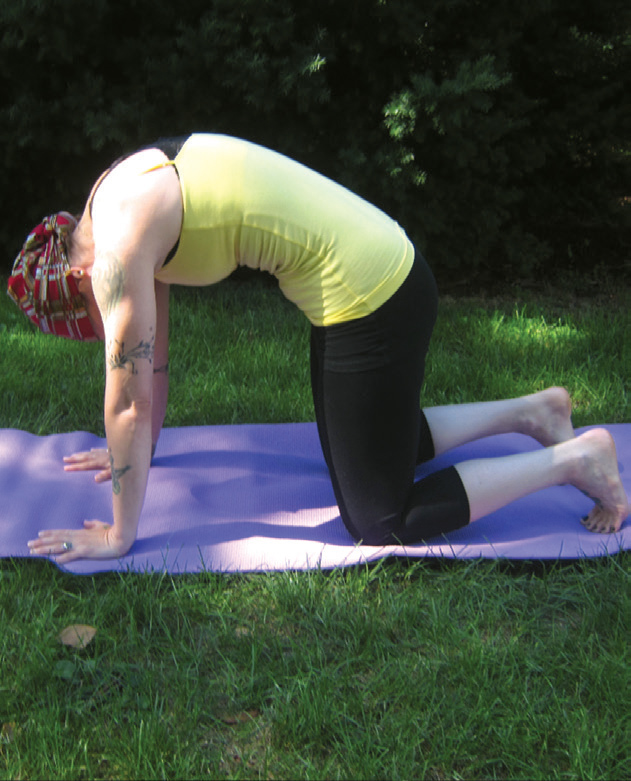
Virasana (Hero’s Pose)
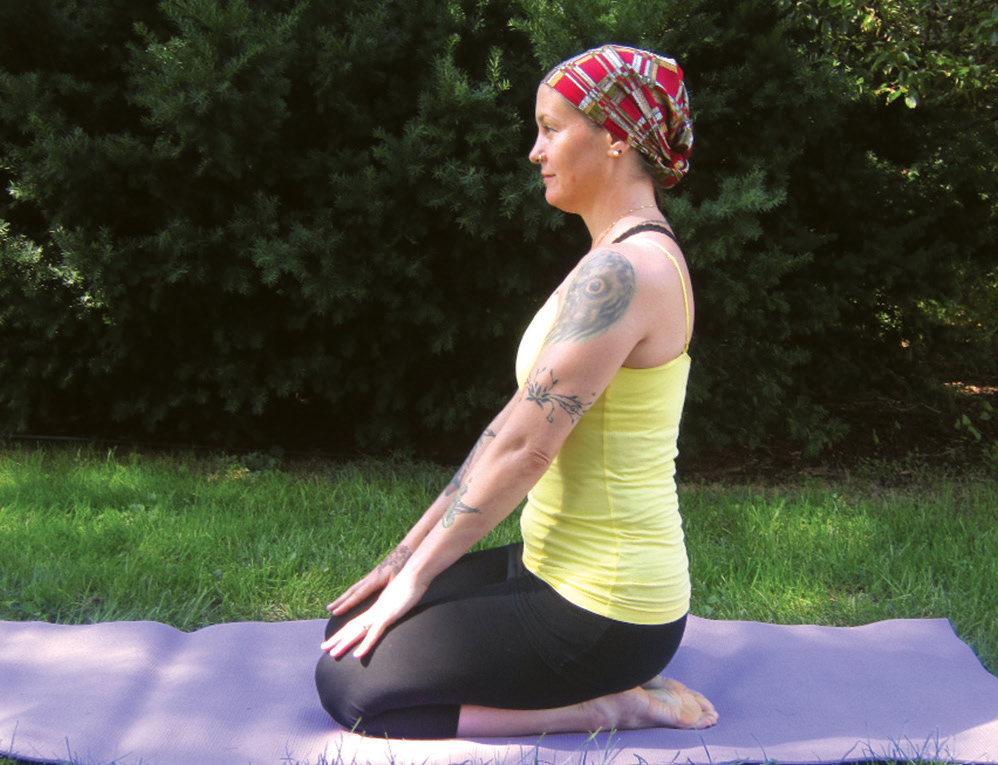
Virasana – Vira means hero, it helps digestion. it is wonderful for opening the knees and hips, but should be avoided if you have had knee or ankle injury.
Stay in virasana for 5 minutes, or for as long as it is comfortable. it is a great posture after a large meal and it is also a meditation posture.
- From tabletop, bring feet side-by-side, shift weight and sit on heels.
- With straight spine, place palms onto thighs, close the eyes and concentrate on breath for 5 minutes, or for as long as it is comfortable.
Paschimottanasana (Seated Forward Bend)
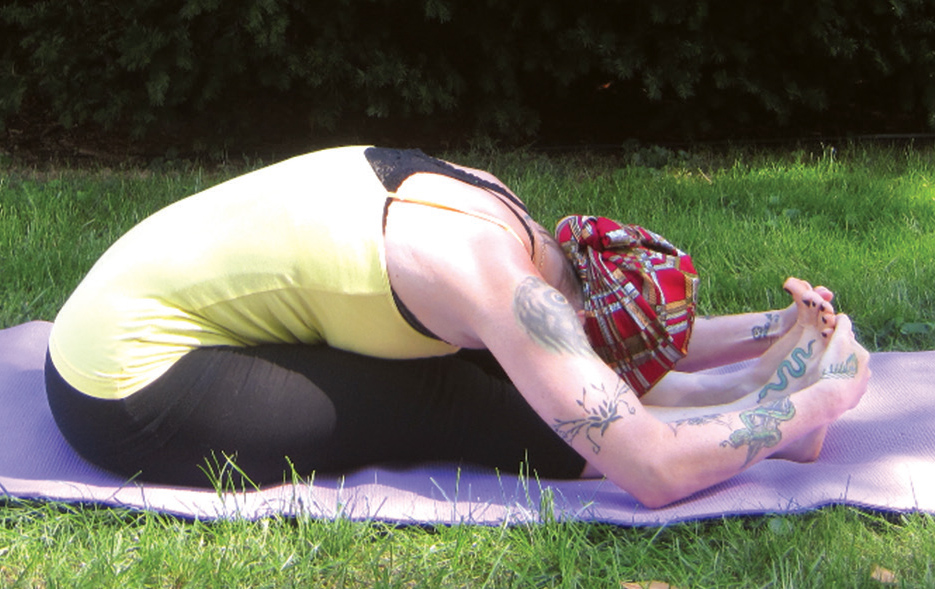
Paschimottanasana stretches the hamstrings, lengthens the spine, massages the digestive system, calms the mind, relieves constipation, and soothes the nervous system. it is often held for 10-15 breaths.
Forward bends calm the entire digestive system, but this posture is not to be done on a full belly. Wait for two hours after eating before doing a yoga practice. since digestive problems are often tied to stress, relaxing the nervous system is helpful in aiding a healthy digestive system. always give ample time for digestion before practicing yoga.
- Sit on sits-bones with legs extended.
- With a straight spine, flex feet, hinge at hips.
- Keep neck in the natural extension with the spine. Do not round the back.
- Place hands on the thighs, shins, or ankles, if you are unable to touch your toes.
- Stay here for 10-15 breaths.
Supta Matsyendrasana (Supine Spinal Twist)
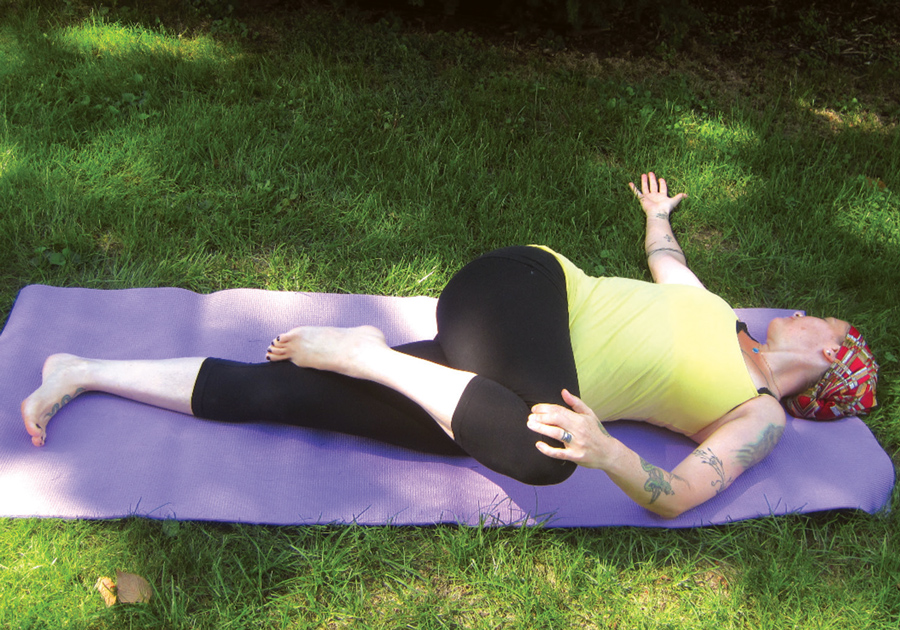
Supta Matsyendrasana helps to relieve tension and calms the nervous system. With twists, we ring out the spine and rinse toxins collected around the spinal column.
- Lie down on back with knees bent and feet on the floor.
- Stretch left leg to the ground.
- Bring right knee to right rib cage/belly.
- Extend right arm, palm faces up.
- Draw right knee to the left.
- Place left hand on right knee to give the body support.
- Turn head to the right. stay in the posture for 10-15 breaths. Unwind gently. repeat the same sequence on the left side. Hold each side for 10-15 breaths.
Shavasana (Corpse Pose)
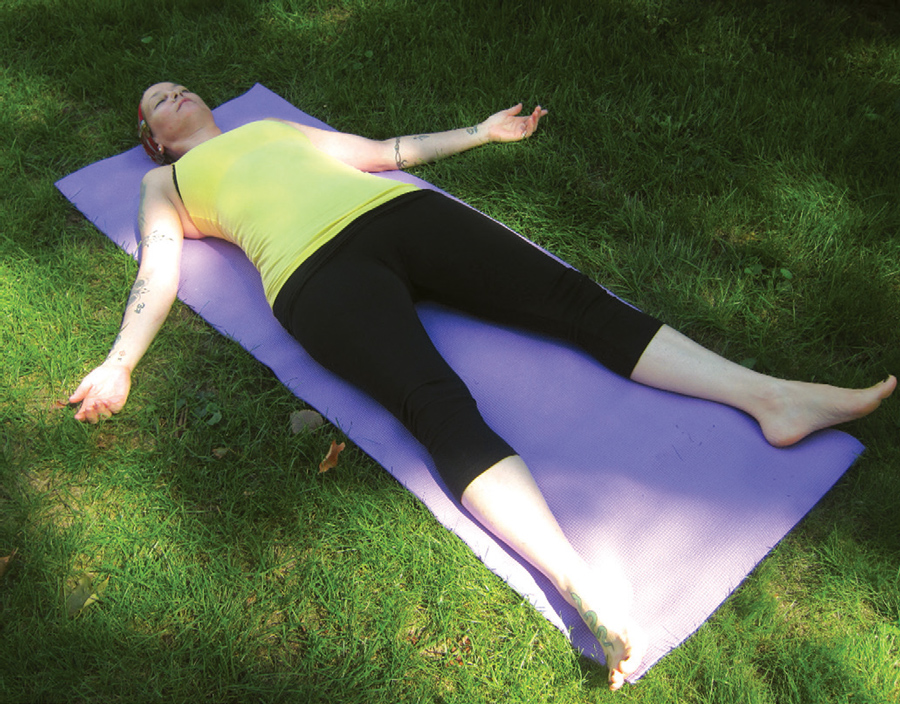
Shavasana is said to be the most difficult to master; yet it is the most beneficial and every yoga practice should include shavasana.
We learn to relax every part of the body through shavasana and also absorb, like a sponge, all the benefits we’ve created through yoga, when the body is at complete rest.
- Lie on your back, let legs and feet fall open.
- Arms rest out to the sides, slightly separated from body, palms face upwards.
- Close eyes. stay in shavasana for 5-10 minutes with the eyes closed. after every yoga practice i suggest spending at least a few moments in meditation or reflection, or Soham meditation.
Recall a past stressful moment and how the belly grew into knots. By taking the time to cultivate a simple yoga and meditation practice, we offer the mind and body the opportunity to unwind.
Everything affects the quality of our lives: healthy food choices, positive thinking, and exercise all help to create healthy digestive fires, among other things. toxins created by stress have a harder time staying in the body when we choose to make healthy decisions. We begin to see benefits gained through the power of our positive actions. We’ve been told since we were children to make wise choices, because the unwise choices have adverse effect on the body, mind, and spirit.
 Krista Angelique began practicing yoga in 1999. She completed “The Heart of Yoga” training at Krishnamacharya Yoga Mandiram in Chennai, India. She’s studied Iyengar Yoga with Gabriel Halpern of Chicago, completed Yoga Teacher Training in California in Vinyasa Flow with Trevor Trice, Amy Caldwell and Rolf Gates. As a formerly trained modern dancer, she brings her love of movement to each of her classes.
Krista Angelique began practicing yoga in 1999. She completed “The Heart of Yoga” training at Krishnamacharya Yoga Mandiram in Chennai, India. She’s studied Iyengar Yoga with Gabriel Halpern of Chicago, completed Yoga Teacher Training in California in Vinyasa Flow with Trevor Trice, Amy Caldwell and Rolf Gates. As a formerly trained modern dancer, she brings her love of movement to each of her classes.







